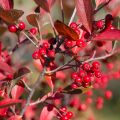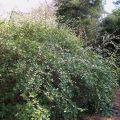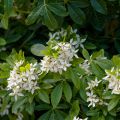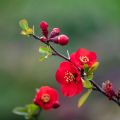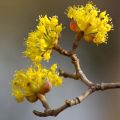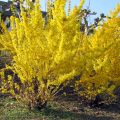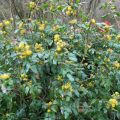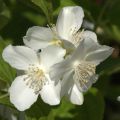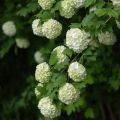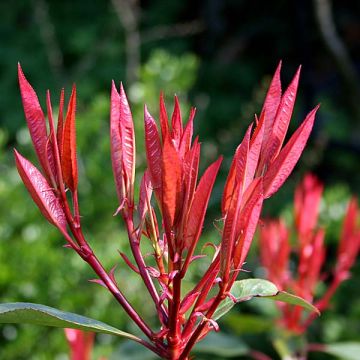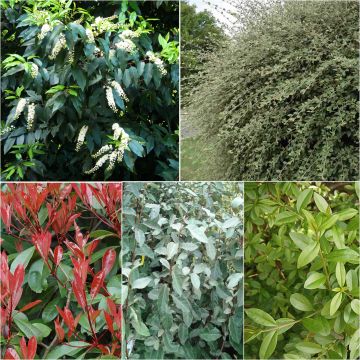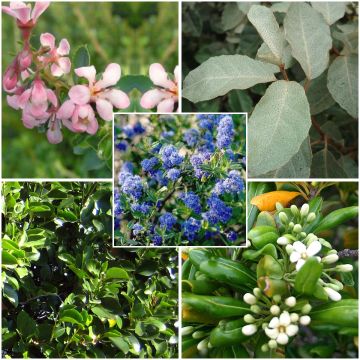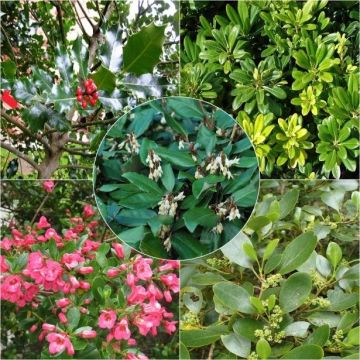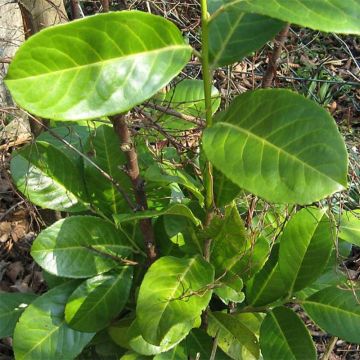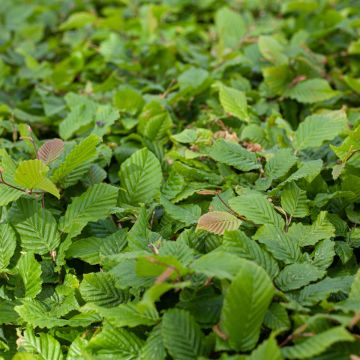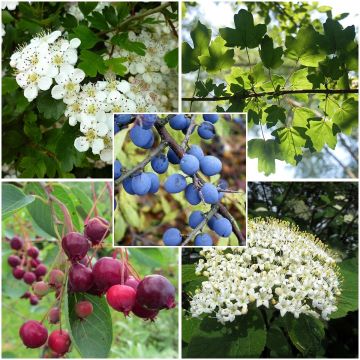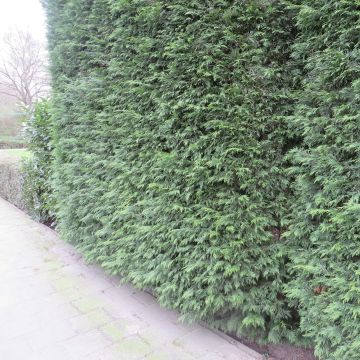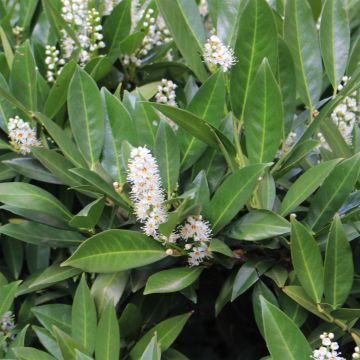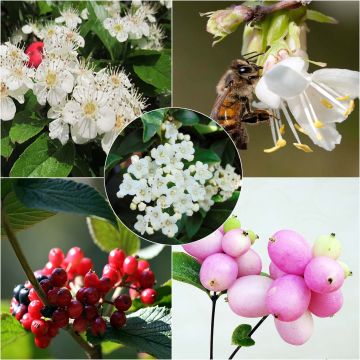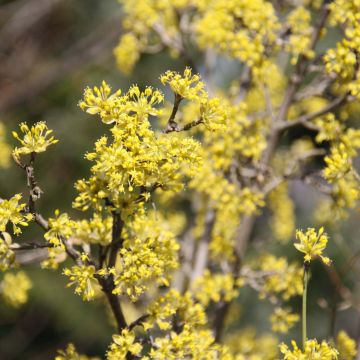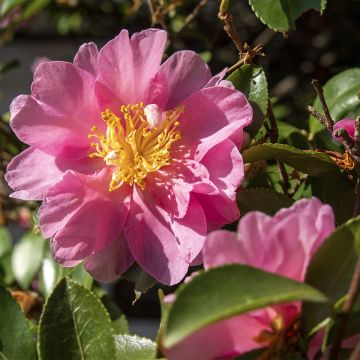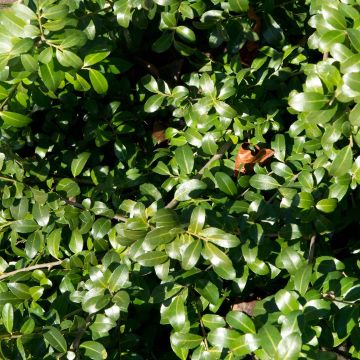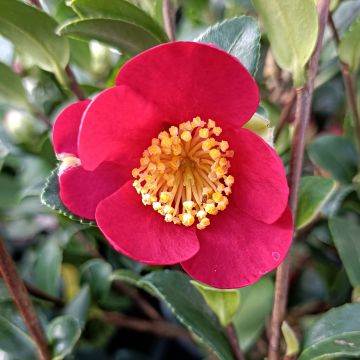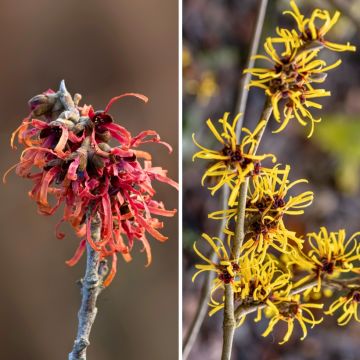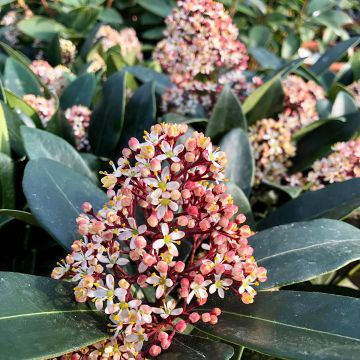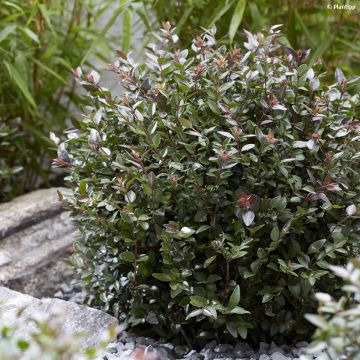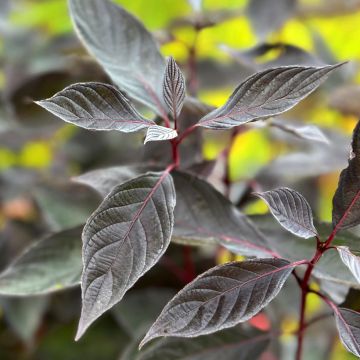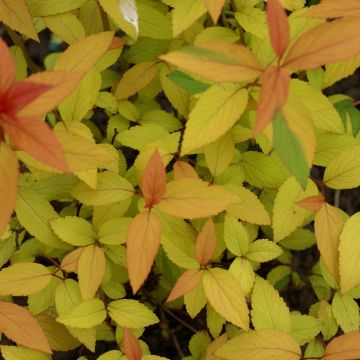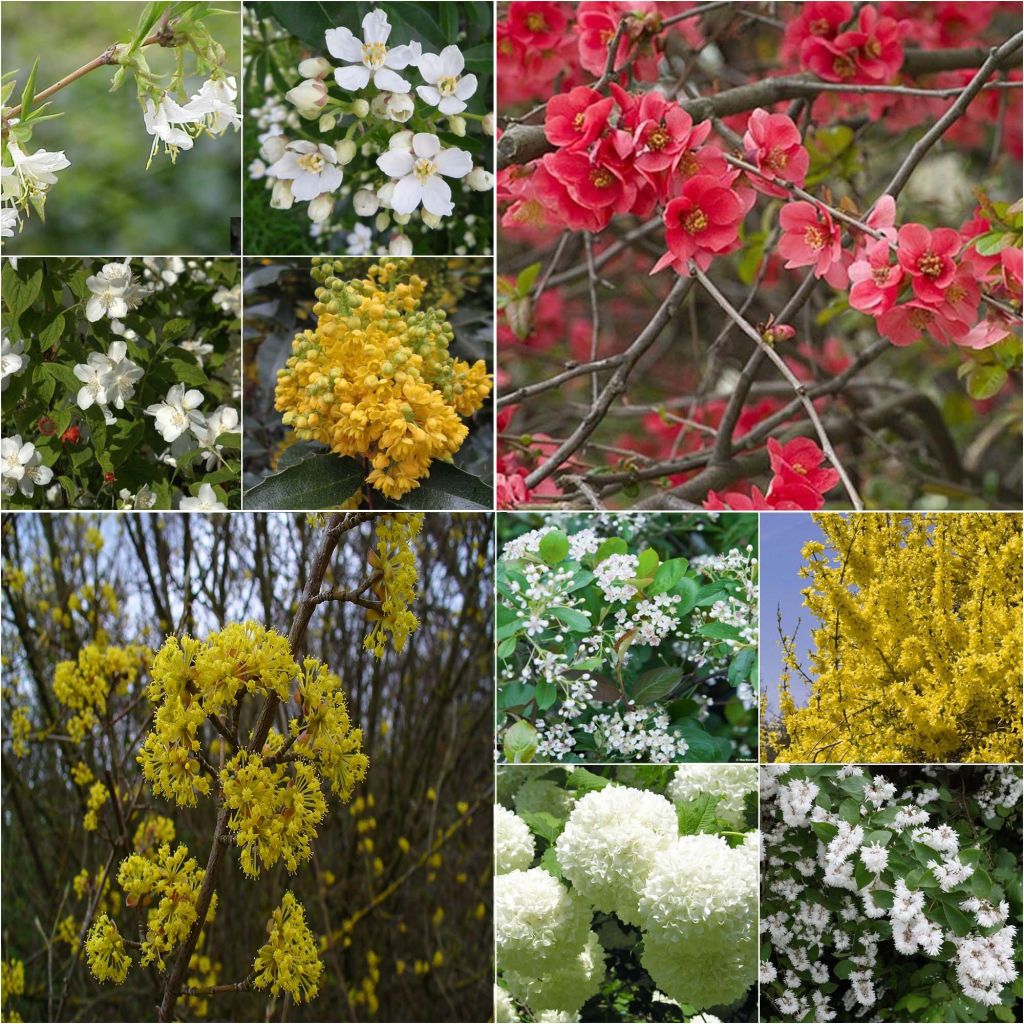

Spring flowered eco hedge kit to Spring Flowering Eco Hedge Collection
Spring flowered eco hedge kit to Spring Flowering Eco Hedge Collection
This plant carries a 24 months recovery warranty
More information
We guarantee the quality of our plants for a full growing cycle, and will replace at our expense any plant that fails to recover under normal climatic and planting conditions.
From €5.90 for pickup delivery and €6.90 for home delivery
Express home delivery from €8.90.
Does this plant fit my garden?
Set up your Plantfit profile →
Collection items (10 plants)
Description
This is a collection of 10 varieties of spring -flowering shrubs with deciduous or evergreen foliage, easy to grow and maintain. They are perfect for creating a dazzling spring hedge that is welcoming to the wildlife in your garden. Delivered in a kit of 10 potted plants. This collection of shrubs allows you to create approximately 10 metres (33 feet) of spring-flowering hedge at a lower cost.
The collection consists of :
- 1 Forsythia intermedia Spectabilis: approximately 2.50 metres (8 feet) tall and 2 metres (7 feet) wide, fast-growing. Deciduous foliage, absent in winter. It is one of the first to bloom at the end of winter, in March-April, and one of the most floriferous. Its small flowers of a bright yellow colour appear before the foliage, along the branches.
- 1 Winter Honeysuckle - Lonicera fragrantissima : approximately 2.50 metres (8 feet) tall and 2.75 metres (9 feet) wide. Dense foliage, more or less evergreen in winter depending on the climate, often falls in January-February. Winter flowering, from December to March depending on the region. The very nectar-rich white flowers are fragrant, giving way to small reddish fruits that ripen in late spring/early summer.
- 1 Mahonia aquifolium - 1 Oregon Grape Holly : approximately 1 metre (3 feet) in all directions. Evergreen foliage in winter. Its leaves are compound, spiny, with a bright green colour, turning purple in winter. Flowering as early as February, with clusters of small, yellow, and fragrant flowers, which give way to dark blue-black berries.
- 1 Cornus mas - Cornelian Cherry : approximately 4 metres (13 feet) tall and 2 metres (7 feet) wide. Deciduous foliage, absent in winter. Bright yellow flowering in February-March, before the leaves appear, which are fragrant. The presence of 2 different individuals is necessary for fruiting. The fruits ripen in late summer, in September-October. They are red and edible. The foliage turns copper-purple in autumn before falling.
- 1 Chaenomeles superba - Japanese Quince Nicoline : approximately 1.50 metres (5 feet) tall and 1.75 metres (6 feet) wide. Deciduous foliage, absent in winter. Honey-scented flowering in March-April depending on the region, with a very bright red colour, which bloom just before the foliage appears or at the same time, on its branches with long and fine sharp thorns. The large globular and fragrant fruits are decorative and edible.
- 1 Choisya ternata - Mexican Orange Blossom : approximately 2 metres (7 feet) in all directions, fairly fast-growing, this shrub has a nicely rounded habit. Its shiny and bright green foliage is aromatic when crushed. It first blooms in April-May, then again in late summer. Its clusters of small white flowers are pleasantly fragrant, reminiscent of orange blossoms. Hardy down to approximately -12/-14 °C, in well-drained soil.
- 1 Aronia arbutifolia Brilliant - Red Chokeberry Brilliant : approximately 3 metres (10 feet) tall and 2 metres (7 feet) wide, which is slightly suckering, fast-growing. Deciduous foliage, absent in winter. Its finely dentate leaves turn fiery red in autumn. May flowering, honey-scented, with white flowers sometimes tinged with pink grouped in clusters. The edible fruits ripen from September to Christmas. They are bright red and have a flavour reminiscent of blackcurrant.
- 1 Viburnum opulus Roseum - Snowball Tree : approximately 3.50 metres (11 feet) tall and 3 metres (10 feet) wide, fast-growing. Blooms between May and June, with flowers in beautiful green balls that turn white, 5 to 6 cm (2in) in diameter. Its green foliage turns purple in autumn.
- 1 Deutzia crenata Pride of Rochester - Deutzia : approximately 3 metres (10 feet) tall and 2 metres (7 feet) wide. Deciduous foliage, absent in winter. Its arched stems bear a generous pinkish flowering in buds in May-June, opening into double corollas of white-pink.
- 1 Philadelphus coronarius - Mock Orange : between 2 and 3 metres (7 and 10 feet) tall, almost as wide. Deciduous foliage, turning yellow in autumn before falling. Blooms in May-June depending on the climate, with numerous cup-shaped white flowers. Its scent is very pronounced, giving off delightful fragrances of orange blossom that attract pollinating insects.
Plant these shrubs preferably in autumn or early spring, in full sun or partial shade, mixing them and spacing them 80 cm (32in) to 1 meter (3 feet) apart. They are content with any well-prepared garden soil improved with leaf compost. Once well established, they do not need watering in summer. This selection is suitable for a garden located in a region with relatively mild winters.
Tips: Do not prune at the beginning of the season to fully enjoy the blooms! If possible, do not prune at the end of summer either to enjoy the fruits and feed the birds in the garden in winter.
Report an error about the product description
Plant habit
Flowering
Foliage
Botanical data
Cultivar or hybrid
Other Hedge-growing kits A to Z
Planting and care
Plant this collection in the sun or partial shade, in ordinary but well-prepared soil, enriched with leaf compost, that is rather moist but well-drained. Dig planting holes of 30-40 cm (12-16in) in all directions, thoroughly loosening the bottom and walls with a fork or pickaxe. Maintain a planting distance of 80 cm (32in) to 1 m (3ft) between each bush. Easy to grow and not very demanding, these shrubs only require mulching in summer in dry climates to maintain some moisture, at least during the first summers after planting. Water them abundantly in the first few years in the case of pronounced drought (15-20 litres of water each time), but keep waterings spaced out. You can prune the longest branches to help your shrubs branch out.
Planting period
Intended location
Care
This item has not been reviewed yet - be the first to leave a review about it.
Hedge shrubs
Haven't found what you were looking for?
Hardiness is the lowest winter temperature a plant can endure without suffering serious damage or even dying. However, hardiness is affected by location (a sheltered area, such as a patio), protection (winter cover) and soil type (hardiness is improved by well-drained soil).

Photo Sharing Terms & Conditions
In order to encourage gardeners to interact and share their experiences, Promesse de fleurs offers various media enabling content to be uploaded onto its Site - in particular via the ‘Photo sharing’ module.
The User agrees to refrain from:
- Posting any content that is illegal, prejudicial, insulting, racist, inciteful to hatred, revisionist, contrary to public decency, that infringes on privacy or on the privacy rights of third parties, in particular the publicity rights of persons and goods, intellectual property rights, or the right to privacy.
- Submitting content on behalf of a third party;
- Impersonate the identity of a third party and/or publish any personal information about a third party;
In general, the User undertakes to refrain from any unethical behaviour.
All Content (in particular text, comments, files, images, photos, videos, creative works, etc.), which may be subject to property or intellectual property rights, image or other private rights, shall remain the property of the User, subject to the limited rights granted by the terms of the licence granted by Promesse de fleurs as stated below. Users are at liberty to publish or not to publish such Content on the Site, notably via the ‘Photo Sharing’ facility, and accept that this Content shall be made public and freely accessible, notably on the Internet.
Users further acknowledge, undertake to have ,and guarantee that they hold all necessary rights and permissions to publish such material on the Site, in particular with regard to the legislation in force pertaining to any privacy, property, intellectual property, image, or contractual rights, or rights of any other nature. By publishing such Content on the Site, Users acknowledge accepting full liability as publishers of the Content within the meaning of the law, and grant Promesse de fleurs, free of charge, an inclusive, worldwide licence for the said Content for the entire duration of its publication, including all reproduction, representation, up/downloading, displaying, performing, transmission, and storage rights.
Users also grant permission for their name to be linked to the Content and accept that this link may not always be made available.
By engaging in posting material, Users consent to their Content becoming automatically accessible on the Internet, in particular on other sites and/or blogs and/or web pages of the Promesse de fleurs site, including in particular social pages and the Promesse de fleurs catalogue.
Users may secure the removal of entrusted content free of charge by issuing a simple request via our contact form.
The flowering period indicated on our website applies to countries and regions located in USDA zone 8 (France, the United Kingdom, Ireland, the Netherlands, etc.)
It will vary according to where you live:
- In zones 9 to 10 (Italy, Spain, Greece, etc.), flowering will occur about 2 to 4 weeks earlier.
- In zones 6 to 7 (Germany, Poland, Slovenia, and lower mountainous regions), flowering will be delayed by 2 to 3 weeks.
- In zone 5 (Central Europe, Scandinavia), blooming will be delayed by 3 to 5 weeks.
In temperate climates, pruning of spring-flowering shrubs (forsythia, spireas, etc.) should be done just after flowering.
Pruning of summer-flowering shrubs (Indian Lilac, Perovskia, etc.) can be done in winter or spring.
In cold regions as well as with frost-sensitive plants, avoid pruning too early when severe frosts may still occur.
The planting period indicated on our website applies to countries and regions located in USDA zone 8 (France, United Kingdom, Ireland, Netherlands).
It will vary according to where you live:
- In Mediterranean zones (Marseille, Madrid, Milan, etc.), autumn and winter are the best planting periods.
- In continental zones (Strasbourg, Munich, Vienna, etc.), delay planting by 2 to 3 weeks in spring and bring it forward by 2 to 4 weeks in autumn.
- In mountainous regions (the Alps, Pyrenees, Carpathians, etc.), it is best to plant in late spring (May-June) or late summer (August-September).
The harvesting period indicated on our website applies to countries and regions in USDA zone 8 (France, England, Ireland, the Netherlands).
In colder areas (Scandinavia, Poland, Austria...) fruit and vegetable harvests are likely to be delayed by 3-4 weeks.
In warmer areas (Italy, Spain, Greece, etc.), harvesting will probably take place earlier, depending on weather conditions.
The sowing periods indicated on our website apply to countries and regions within USDA Zone 8 (France, UK, Ireland, Netherlands).
In colder areas (Scandinavia, Poland, Austria...), delay any outdoor sowing by 3-4 weeks, or sow under glass.
In warmer climes (Italy, Spain, Greece, etc.), bring outdoor sowing forward by a few weeks.

































